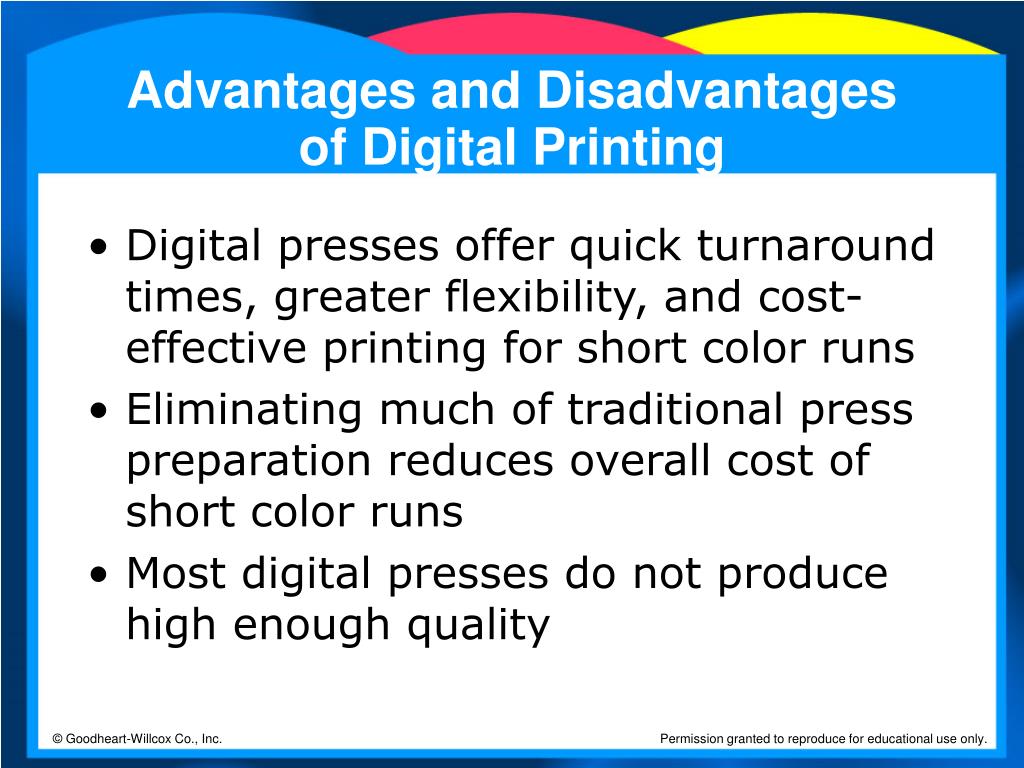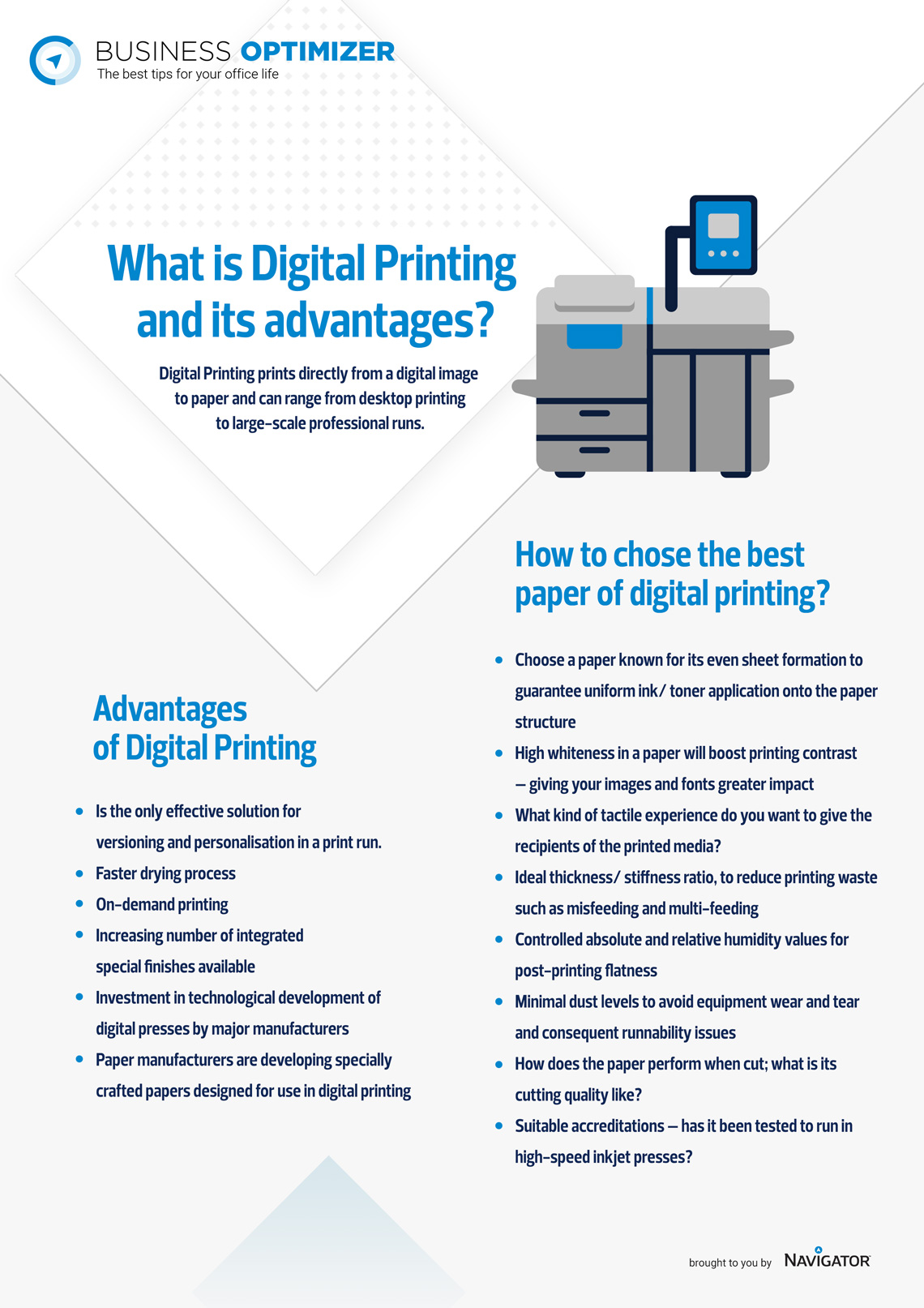Examine This Report about Digital Printing
Examine This Report about Digital Printing
Blog Article
Some Known Factual Statements About Digital Printing
Table of ContentsDigital Printing Can Be Fun For EveryoneDigital Printing Things To Know Before You BuyThe Of Digital PrintingGetting The Digital Printing To WorkSome Ideas on Digital Printing You Need To KnowUnknown Facts About Digital Printing
Variable information printing, such as direct mail with personalized codes and addresses, is ideally suited for electronic printing. Digital quick printing just needs four steps of style, testimonial, printing and binding to obtain every little thing done. Digital fast printing has an unmatched advantage: print on need.According to PMMI, electronic printing allows brands and producers to respond quickly to customer needs while improving the supply chain, decreasing warehousing expense and waste, and delighting in faster time to market. That all audios terrific, yet just how does this modern technology do all that? The significant differentiator of these modern technologies is that there are no set-up costs and no plates with digital printing.
The Main Principles Of Digital Printing
According to Wikipedia, the greatest distinction between electronic printing and standard techniques such as lithography, flexography, gravure, or letterpress - Digital Printing is that there is no requirement to replace printing plates in electronic printing, whereas in these analog printing approaches the plates are repetitively changed. This leads to quicker turnaround time and decreases expense when utilizing digital printing.
Digital printing is very flexible, so it's easy to make changes to the package style swiftly. It all goes back to the plates.
Extra supply can mean even more waste down the roadway. With standard printing approaches, short-run printing is just not possible. Since an excellent design can make or damage your item, electronic printing consistently creates premium, clear and vivid graphics each time. Digital printing on flexible bags includes the brilliant, vibrant, and specific graphics that practically bid consumers to get to out and touch them.
Digital printing is the procedure of printing digital-based images straight onto a range of media substrates. There is no need for a printing plate, unlike with balanced out printing. Digital data such as PDFs or desktop computer publishing data can be sent out directly to the digital printing machine to print theoretically, image paper, canvas, material, synthetics, cardstock and various other substrates.
8 Simple Techniques For Digital Printing
According to PMMI, digital printing permits brands and suppliers to react swiftly to customer needs while enhancing the supply chain, reducing warehousing expense and waste, and enjoying faster time to market. That all audios great, however just how does this technology do all that? The significant differentiator of these modern technologies is that there are no set-up charges and no plates with electronic printing.
This results in quicker turnaround time and decreases price when using electronic printing.

Digital Printing for Beginners
With traditional printing approaches, short-run printing is just not feasible. Since an excellent design can make or break your product, electronic printing constantly produces top notch, clear and vivid graphics each time.

According to PMMI, electronic printing allows brands and producers to react rapidly to client needs while improving the supply chain, minimizing warehousing cost and waste, and enjoying faster time to market. That all sounds great, yet just how does this modern technology do all that? The major differentiator of these modern technologies is that there are no set-up fees and no plates with electronic printing.
The Main Principles Of Digital Printing
According to Wikipedia, the best distinction in between electronic printing and typical approaches such as lithography, flexography, gravure, or letterpress is that there is no demand to change printing plates in electronic printing, whereas in these analog printing approaches home plates are repetitively changed. This causes quicker turn-around time and decreases expense when Website using digital printing.
Fast production indicates getting your item to market much faster. It additionally indicates it's less complicated and faster to make adjustments in the future, when you alter a recipe, add a SKU, or create seasonal packaging. Digital printing is very adaptable, so it's simple to make modifications to the package layout promptly. Everything returns to home plates.

The 9-Minute Rule for Digital Printing
Digital printing is the procedure of printing digital-based images straight onto a variety of media substratums. There is no need for a printing plate, unlike with countered printing. Digital files such as PDFs or desktop computer publishing data can be sent straight to the digital printing machine to publish on paper, image paper, canvas, fabric, synthetics, cardstock and various other substratums.
Report this page